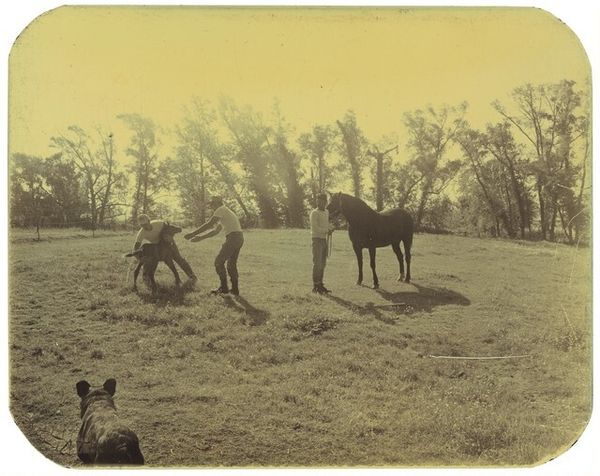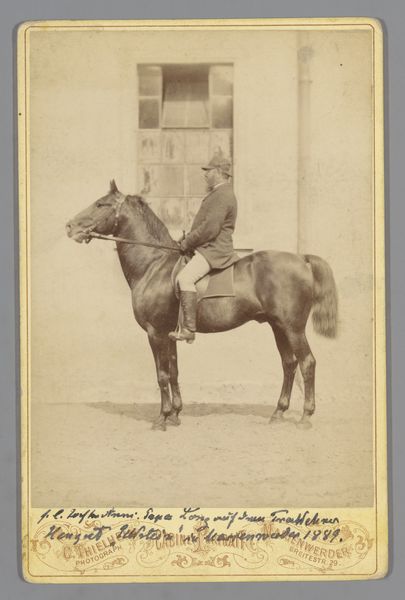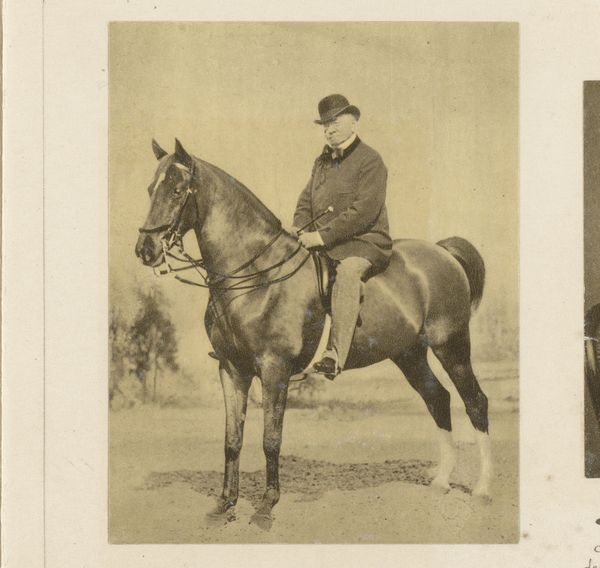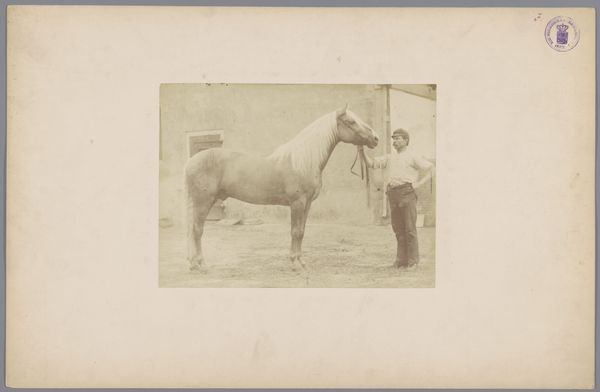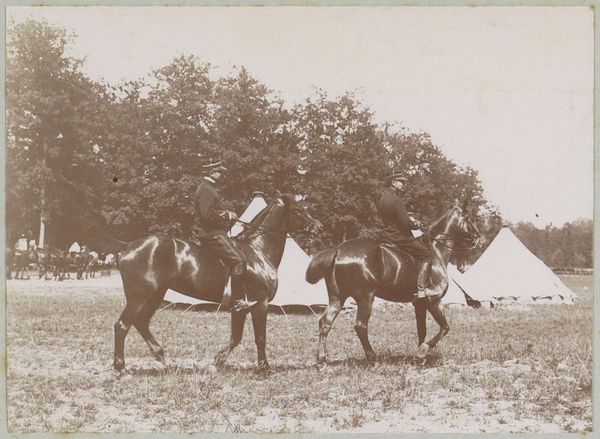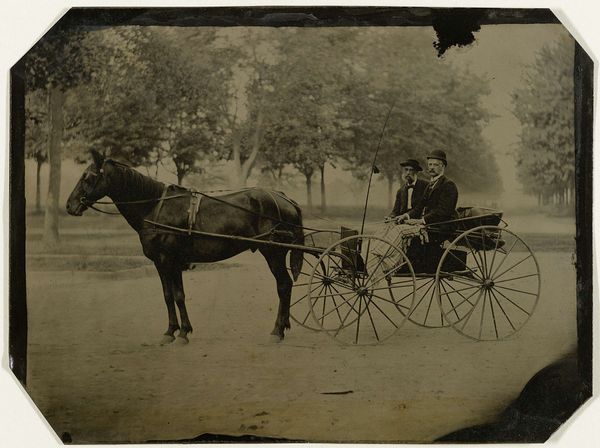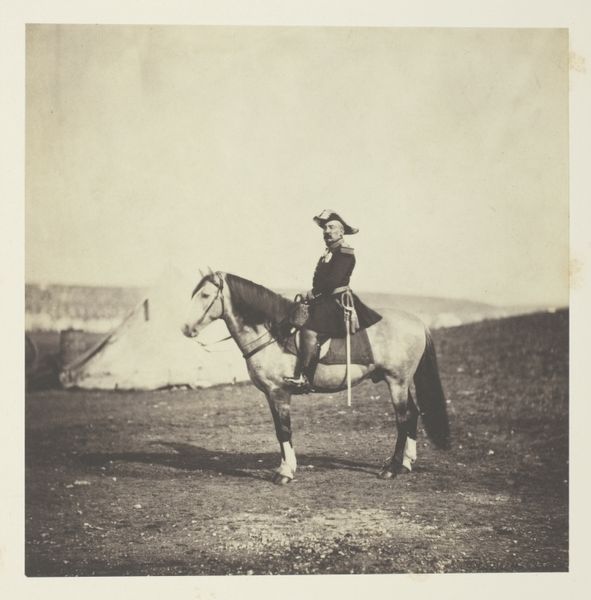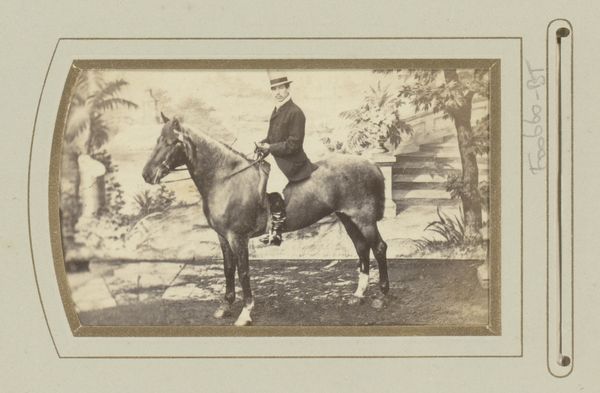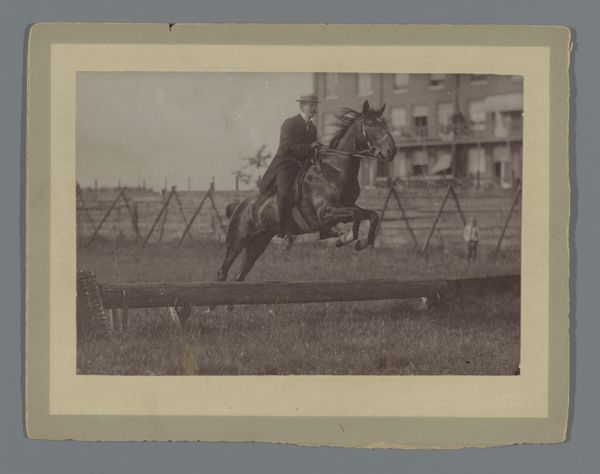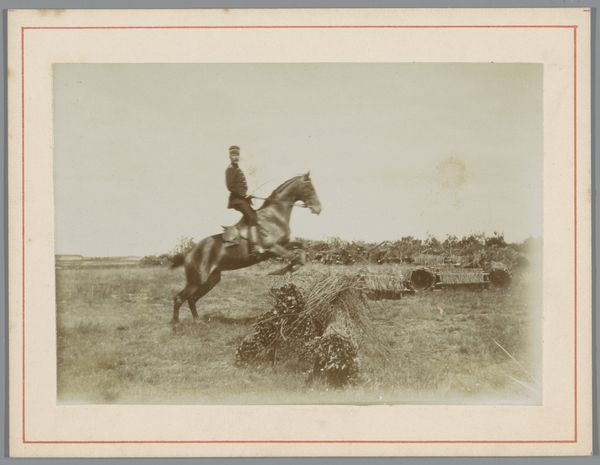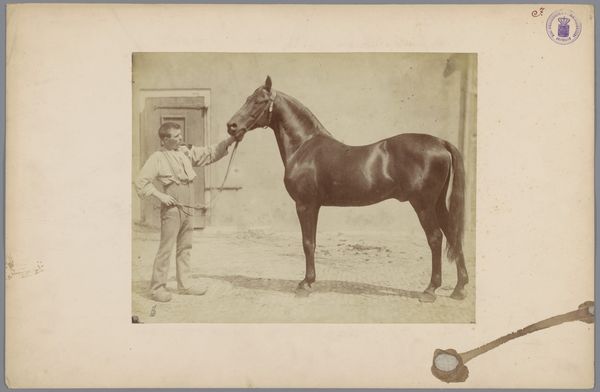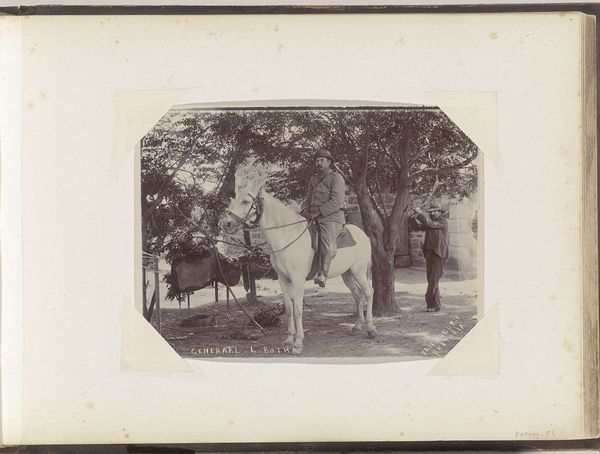
photography, gelatin-silver-print
#
portrait
#
kinetic-art
#
animal
#
impressionism
#
landscape
#
photography
#
horse
#
gelatin-silver-print
#
men
Copyright: Public Domain
Curator: Let's turn our attention to a photograph from 1884 entitled "Horse," crafted by Ottomar Anschütz. Editor: It's striking! There's a raw, almost volatile energy captured here. The rearing horse dominates the frame, radiating defiance. Curator: Precisely. As a gelatin silver print, the monochromatic palette adds to the image's intensity, distilling the scene to its essential components of light, shadow, and form. Editor: Beyond just a portrait, it seems to evoke the historic symbolism of the horse: untamed power, freedom, even a symbol of war or conquest. Given the era, do you see military connotations here? The figure does appear to be in some sort of uniform. Curator: It’s tempting to see militarism. However, notice how the grid laid over the image. It reminds us that Anschütz, like Muybridge, was driven by a scientific impulse, striving to capture and analyze motion in unprecedented detail. The work's primary essence is its formalism. Editor: You see, though, the psychological implications inherent in this specific depiction? That forceful, uncontrolled nature is deeply evocative and speaks volumes beyond mere scientific document. Curator: I concur that an interpretation is easily accessible. Note, though, that his innovation lies in capturing that single, fleeting moment. It allows us to visually deconstruct the mechanics of movement in a way that was previously impossible. Editor: Ultimately, it’s the intersection of the symbolism and raw emotive qualities that makes this so gripping, setting Anschütz apart from a pure scientist like Muybridge. Curator: Perhaps that is a key takeaway. This is more than motion study. It's form and affect intertwined. Editor: I find it interesting how a symbol gains its richness through how an image is assembled. Curator: Indeed. Anschütz gifts us with a confluence of elements rarely seen, even in modernity.
Comments
No comments
Be the first to comment and join the conversation on the ultimate creative platform.

